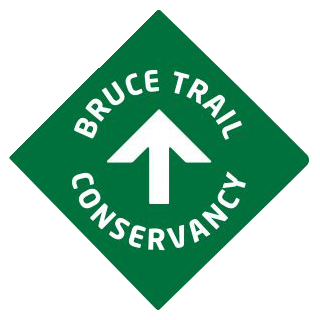Common Buckthorn (Rhamnus cathartica) is Old World in origin. It is thought to have been introduced from Europe in the late 1800’s, after settler deforestation, for use in windbreaks, erosion control, and stream bank stabilization. Planted in many locations across Canada, it can now be found from Nova Scotia to Saskatchewan, including throughout southern Ontario.
The Common Buckthorn tolerates shade and drought, and grows well in a variety of habitats, especially along edges of roadsides, fence lines, woodlands, pastures, and unused fields. As an invasive species, its presence has proven troublesome for native plants and animals, as well as agricultural crops.
What to look for
The Common Buckthorn is a shrub, with the following distinguishing characteristics:
- a woody plant that forms dense thickets, from small shrubs to small trees with trunks up to 25 cm in diameter and 6-7 m high
- thorn-like, hairless twig tips
- dark grey/brown stems flecked with white horizontal lines, reminiscent of cherry bark
- smooth and shiny young bark, that becomes roughly textured as it matures
- bark removal exposes an orange heartwood underneath
- sharp-tipped leaves with conspicuous, curved veins, that appear along the stem in pairs that are sometimes offset from each other
- leaf edges with small, rounded ‘teeth’
- greenish-yellow, non-showy flowers
- green berries (on the female plant) that turn black when mature, appearing in dense clusters, with a deep narrow groove
The Common Buckthorn (Rhamnus cathartica) is closely related to two other species of buckthorn found in Canada: another invasive species, Glossy Buckthorn (Rhamnus frangula) and a native species, Alderleaf Buckthorn (Rhamnus alnifolia). The Alderleaf Buckthorn is typically under 1 m high.
Features that differentiate the Glossy Buckthorn from the Common Buckthorn are:
- Twigs: hairy without a terminal spine
- Leaves: alternate along the stem and have straight veins and smooth edges
- Bark: not smooth or shiny when young
- Heartwood: not orange
- Berries: solitary or in small clusters without a groove
Impact
Common Buckthorn creates a variety of problems for natural settings around Ontario. Its prolific, rapid and dense growth outcompetes native plant species. More destructively, it alters the nitrogen composition of the soil, with long-lasting inhibitory effects on the growth of surrounding understory plants, also changing earthworm populations in ways that prematurely destroy forest leaf layers. The laxative quality of Common Buckthorn berries, while ensuring its own seed spread, negatively impacts wildlife nutrition. Similar to non-native honeysuckles, Common Buckthorn also increases songbird susceptibility to predation.
The Common Buckthorn is included as a noxious weed under the province’s Weed Control Act; it hosts Oat Crown Rust and the Soybean Aphid, damaging oat, soybean and other vegetable crops.
Control
Control of Common Buckthorn is aided by the fact that its leaves can remain green into November, well after most other plants’ leaves have turned colour, lending to easier identification of sites of infestation.
In moist soil conditions, plants up to 1 m high can be pulled. Larger plants require tools for digging out their deep roots. Cutting or girdling larger plants, with application of herbicide to stumps or girdled areas to deter re-sprouting, is another option. Please note that anyone using an herbicide must comply with herbicide legislation and follow the label.
Restoration plantings may be carried out most effectively in phases, with monitoring over time to identify and remove future seedlings, as these seeds can germinate for up to five years.
Help for Landowners
Landowners along the Bruce Trail may be concerned about invasive species such as Common Buckthorn. The Bruce Trail Conservancy has a small team of staff ecologists well-versed in local invasive species and forest ecosystems, and offers a Landowner Stewardship Program to aid Trail landowners. Upon request, Conservancy staff will provide expert advice on invasive species and their control. If you need this support, please contact the BTC's Landowner Stewardship Coordinator at 905-529-6821 ext. 232 or landownerstewardship@brucetrail.org.
Pull Party!
Are you interested in joining future “Pull Parties” of like-minded Niagara BTC members who would like to give back to the Trail and our Landowners by helping to control invasive species in Niagara? Any interested members should send an email to aliciaaitchison1@gmail.com for more information.
Resources
This article drew upon Ontario Invasive Plants Council information at: https://www.ontarioinvasiveplants.ca/ and the expertise of Bruce Trail Conservancy ecologists.
As well, check out:
EDDMapS Ontario (for tracking invasive species): https://www.eddmaps.org/ontario/
Invasive Species Centre: https://www.invasivespeciescentre.ca/






